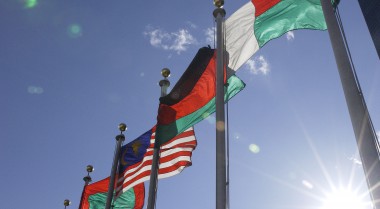Making Prevention Possible
Conflict prevention has become a major focus on the international agenda. From the times of Kofi Annan's pledge to move ‘from a culture of reaction to a culture of prevention´ to current UN Secretary General António Guterres' three top priorities - ´prevention, prevention and prevention´ - an international consensus around the importance of prevention is growing. Despite this surge in the prevention discourse, there is still a need to reduce what Kofi Annan called ‘the unacceptable gap between rhetoric and reality.´
To move from theory to practice, peacebuilders can learn from other fields where preventive approaches have been successful. Take for example healthcare. A strong consensus about the need to prevent deadly diseases has led to the development of an array of interlinked mechanisms and policies. These include health education in schools, community health clinics, public health awareness campaigns, emergency response protocols to halt the outbreak of infectious diseases, government health policy and public funding of healthcare systems, and international cooperation to address common problems. A long term approach to understanding health risks and vulnerabilities and the development of a strong constituency to address these hazards have been instrumental for the success of preventive approaches in the sector.
A similar approach can be used for the prevention of armed conflict, including peace education in schools, community-based peacebuilding centres, public peace campaigns in times of tension, monitoring systems and emergency response mechanisms for possible outbreaks of violence, government peace policies backed by the funding to implement them, preventive diplomacy including multi-track initiatives and multi-stakeholder collaboration, can all contribute to societies in which we address conflicts before they turn violent.
Some of the key findings that are being elaborated in the flagship UN-World Bank study on the prevention of violent conflicts suggest the need to move from a focus on crisis to a focus on the early identification of risks. As in the healthcare field, the study also indicates that a gender and age group lens is fundamental for prevention.
The development of a strong constituency for prevention is one of the first steps to bridge the gap between rhetoric and practice. Identifying common goals and developing collaborations among different actors to achieve these goals are key elements to make prevention possible. A shared analysis and identification of risks by the different actors of prevention, (governments, multilateral organisations, private sector, academia, civil society organisations others) would contribute to forge collaborations and address social vulnerabilities that could lead to violence.
Any effort to do prevention must put people at the centre. It cannot be an ‘elitist' exercise but rather an inclusive effort to understand what are those elements that individuals and communities need in order to feel secure and how can we respond to those needs. The Global Partnership for the Prevention of Armed conflict, GPPAC, was founded to strengthen the constituency around prevention and to enable collaborations among different actors. We have shown a strong convening power and are in a unique position to bring the voices of grassroots actors to national, regional and global multilateral forums and make a significant contribution to managing the risk of violence outbreaks. The work of GPPAC members around the world is guided by one strong conviction: Together we can make prevention possible!
By Darynell Rodriguez Torres, GPPAC Executive Director

